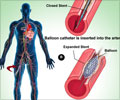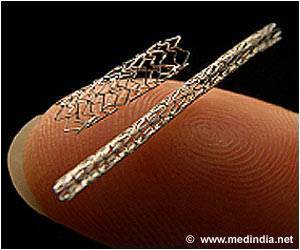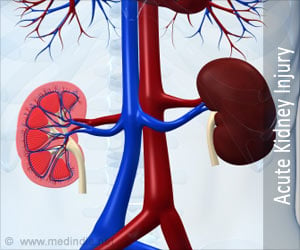Heart patients with the desire to work post-heart attack are completely safe to return to work, finds a new study.

TOP INSIGHT
Returning to work after a heart attack depends on the type of work, the severity of your heart attack and your recovery progress.
Read More..
The probability of returning to work depends mainly on the patient's decision - do they want to go back or not? Next are psychological factors, with lack of confidence, depression, and anxiety all predicting failure to return. The patient's medical condition combined with the type of work can also have an impact. Blue collar workers may struggle if they have heart failure, rhythm instability, or ischemia which reduce physical performance. Those with implanted cardiac devices might need to avoid workplaces with electrical fields.
As for gender differences, Dr. Reibis said: "There is still the traditional idea that the man must go back to work because he is the breadwinner. Whereas women can be reintegrated, but it depends on whether they want to. Added to that, women tend to have more doubts about their ability to perform their prior tasks - particularly blue-collar roles. Well educated women with white collar jobs don't have this problem."
Similarly, blue-collar workers with lower education and socioeconomic levels are more likely to quit after one year. This is particularly true for patients in their 30s who smoke and are overweight or obese.
How to successfully return to work:
- Attend cardiac rehabilitation (half of the eligible patients don't) for advice on a healthy lifestyle, plus personalized tips from a cardiologist, psychologist, physiotherapist, social worker, and occupational therapist on getting back into employment.
- Don't change jobs.
- Take it gradually if needed: do fewer hours/days at the start, work from home once a week, take more breaks, delegate some responsibility.
- Stay in contact with your GP and/or company doctor and adjust the workload if needed.
"The best way is to return to the job you know," said Dr. Reibis. "Patients who had a relatively small heart attack with complete restoration of blood flow, are consistently taking their medication and don't have an implanted device can do their work as before without any precautions."
Regarding follow-up after resuming work, patients who have no signs of depression or anxiety, feel positive about their ability to work and can meet the physical requirements don't need specific follow-up advice. Further observation is needed for those with work-related problems - typically middle-aged male blue-collar workers with low education and a high burden of comorbidities such as obesity, smoking, and diabetes.
"Such patients need continuous input with coping strategies and support," said Dr. Reibis. "For example, they can do a longer programme of cardiac rehabilitation. It is very important that they maintain contact with their GP or company doctor and modify the tasks as needed."
The paper was written by the Secondary Prevention and Rehabilitation Section, European Association of Preventive Cardiology (EAPC) of the ESC. It is published during the EAPC's annual congress EuroPrevent.
Patient testimonial: Ákos Gesztes
"Four years ago I had a severe heart attack at the age of 42. I collapsed in a pharmacy, and despite quick intervention and the insertion of two stents, my heart was not strong enough to circulate sufficient blood. I was put on extracorporeal circulatory support and a breathing machine and kept in a coma for one week. Two additional stents were inserted during my rehabilitation.
It was a shock to face up to my situation. I was told once that I would never work again - that was the worst for me. I restarted work 1.5 months after the event, first from home thanks to my company and bosses. After three months I could go back to normal work.
Being positive helped me resume my job - I told myself I was a survivor and got a second chance, and I learned to differentiate between healthy fear and unhealthy anxiety. It was also essential to understand the causes of my heart attack that I am at increased risk for future events, and why following the advised treatments will reduce my risk. I changed my life: I cycle 13 km every second day, have a low cholesterol diet, and have taken all my prescribed medications during the last four years.
Rehabilitation is very important for going back to work, not just physically but also mentally and emotionally. I found that the process can be accelerated by having colleagues and bosses who understand the situation and offer a transitional period with less stress and workload."
Source-Eurekalert
 MEDINDIA
MEDINDIA




 Email
Email










